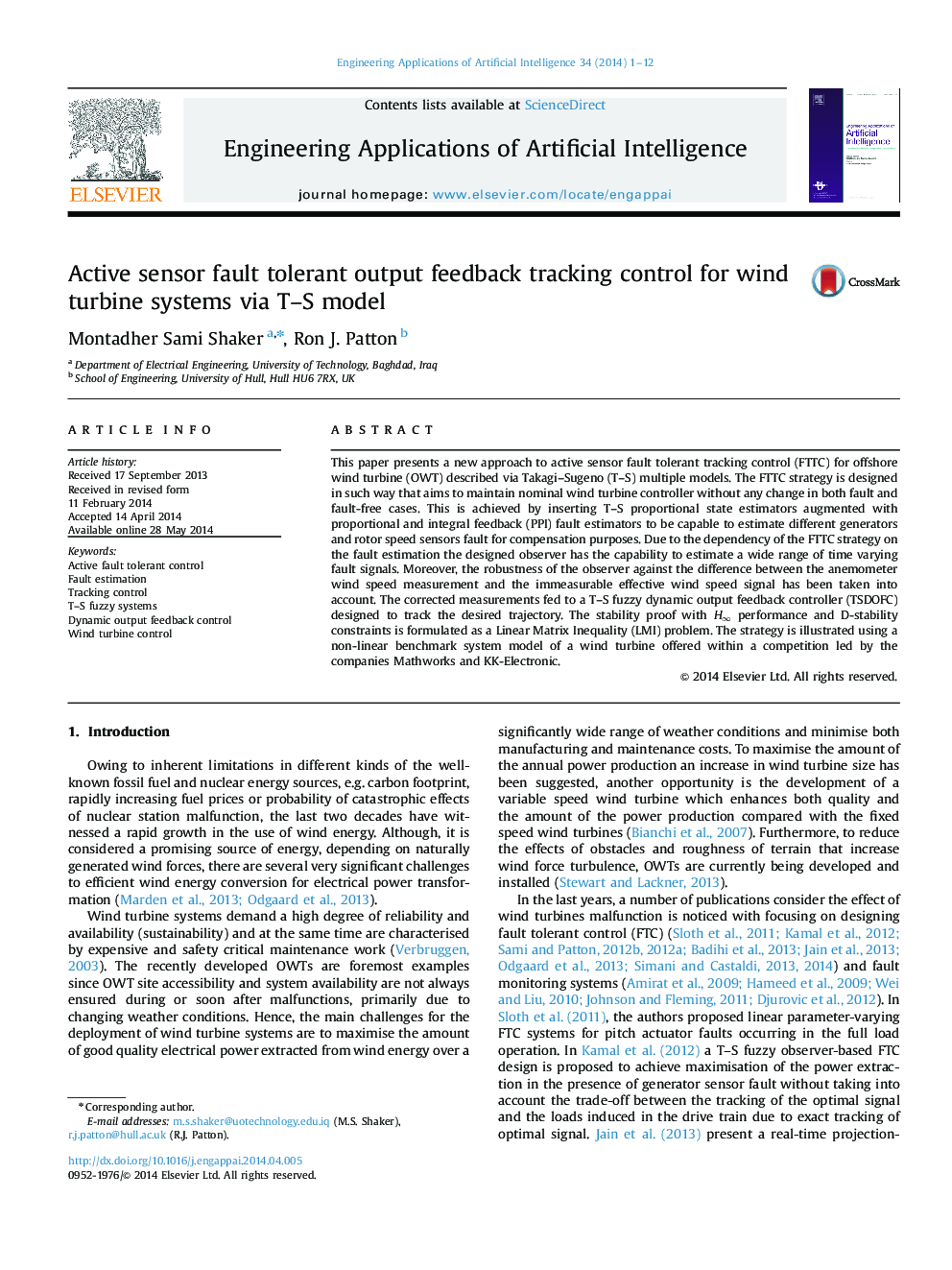| Article ID | Journal | Published Year | Pages | File Type |
|---|---|---|---|---|
| 380424 | Engineering Applications of Artificial Intelligence | 2014 | 12 Pages |
This paper presents a new approach to active sensor fault tolerant tracking control (FTTC) for offshore wind turbine (OWT) described via Takagi–Sugeno (T–S) multiple models. The FTTC strategy is designed in such way that aims to maintain nominal wind turbine controller without any change in both fault and fault-free cases. This is achieved by inserting T–S proportional state estimators augmented with proportional and integral feedback (PPI) fault estimators to be capable to estimate different generators and rotor speed sensors fault for compensation purposes. Due to the dependency of the FTTC strategy on the fault estimation the designed observer has the capability to estimate a wide range of time varying fault signals. Moreover, the robustness of the observer against the difference between the anemometer wind speed measurement and the immeasurable effective wind speed signal has been taken into account. The corrected measurements fed to a T–S fuzzy dynamic output feedback controller (TSDOFC) designed to track the desired trajectory. The stability proof with H∞ performance and D-stability constraints is formulated as a Linear Matrix Inequality (LMI) problem. The strategy is illustrated using a non-linear benchmark system model of a wind turbine offered within a competition led by the companies Mathworks and KK-Electronic.
